7 Newsletter Ideas to Engage Your Customers
Updated March 29, 2024
7 min read
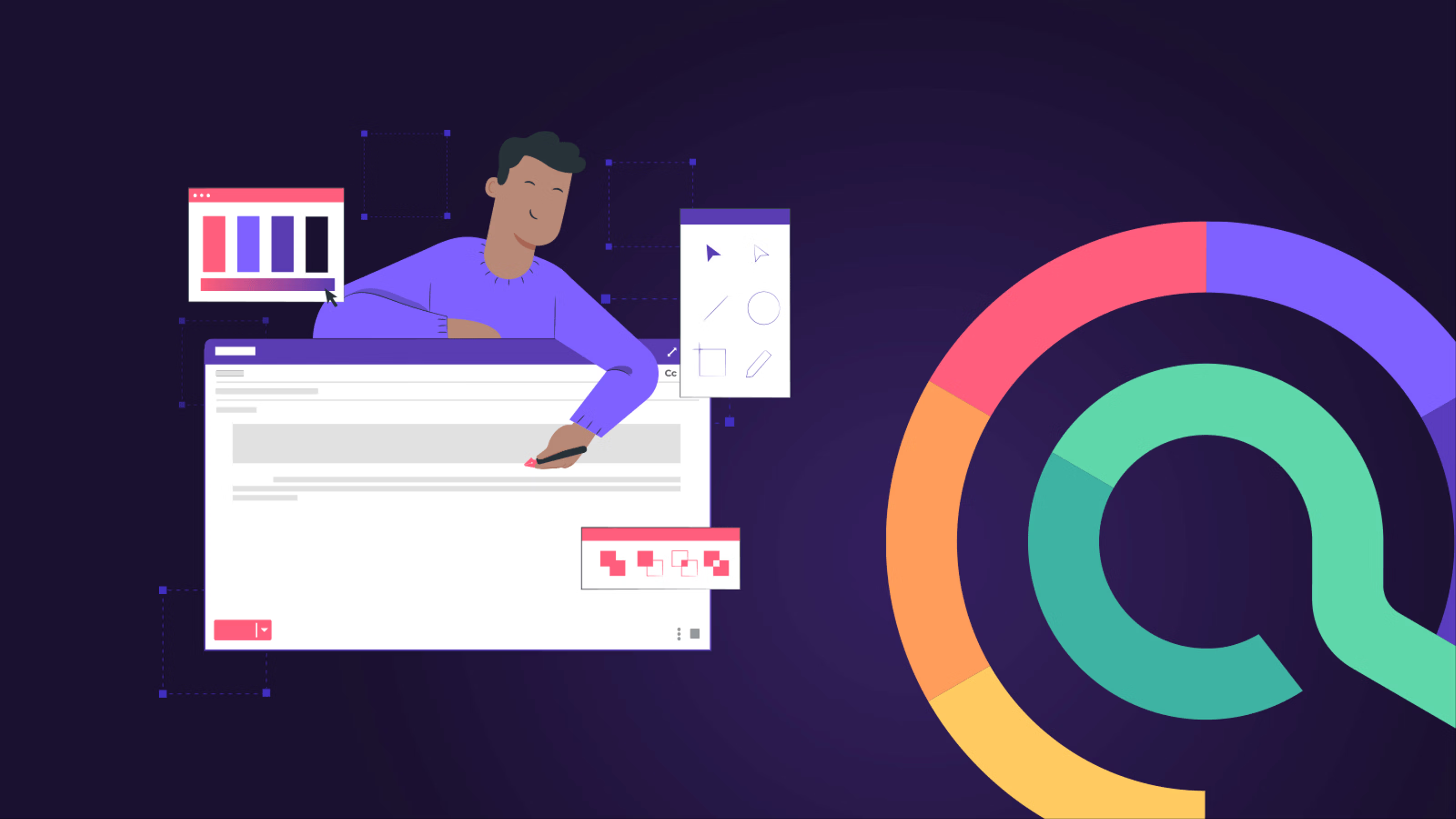
Newsletters are a great way to touch base with your audience, and build a strong relationship with them. It is an important means of communication and keeps customers or visitors informed of what your company has been up to.
With the rise of email marketing, newsletters have become very popular amongst marketers. They give you a chance to engage your readers, better showcase your existing content, and ask for feedback when needed.
It is no wonder then that 83% of B2B companies use email newsletters as part of their content marketing program, and 40% of B2B marketers say that these newsletters are most critical to their content marketing success.
But when you sit down to create the content, what exactly should you include in your newsletter?
In this post, we will take you through newsletter ideas that you can apply to your strategy right away. But first, let us understand why newsletters have gained so much popularity.
Benefits of newsletters
Newsletters are a great way to talk to hot leads - customers that are already interested in what you have to offer. They give you a chance to nurture them and point them towards the action you want them to take.
Your email newsletter is a great way of providing value via interesting and exciting content. When newsletters come with quality content, subscribers are likely to stay engaged, and thus, connected with you.
It is important to build relationships with customers, because they are more likely to buy from brands that they know and trust. By offering added value through newsletters, a brand can shorten this process.
If you’ve now decided you want to start sending out email newsletters or revamp the ones you already have, keep reading. You don’t want your newsletter to fail; to become an uninteresting mush of content that people ignore, delete, or straight up unsubscribe from.
Newsletter ideas
Newsletter Idea 1: Promote your blog
If you have a blog, it is a good idea to send your most recent article to your readers. You can even send more than one – why wouldn’t you want more people to read a post you’ve spent so much time on?
You can send it along with an image and a short snippet, with a link to your blog. A great example here is Medium, which sends its readers a weekly email with personalized blog post recommendations.
 Newsletter Idea 2: Promoting news
Newsletter Idea 2: Promoting news
You can also use your newsletters as an opportunity to keep your audience in the know about any major milestones you have hit as a company. For example, a start-up can update its audience when they have been acquired or received funding.
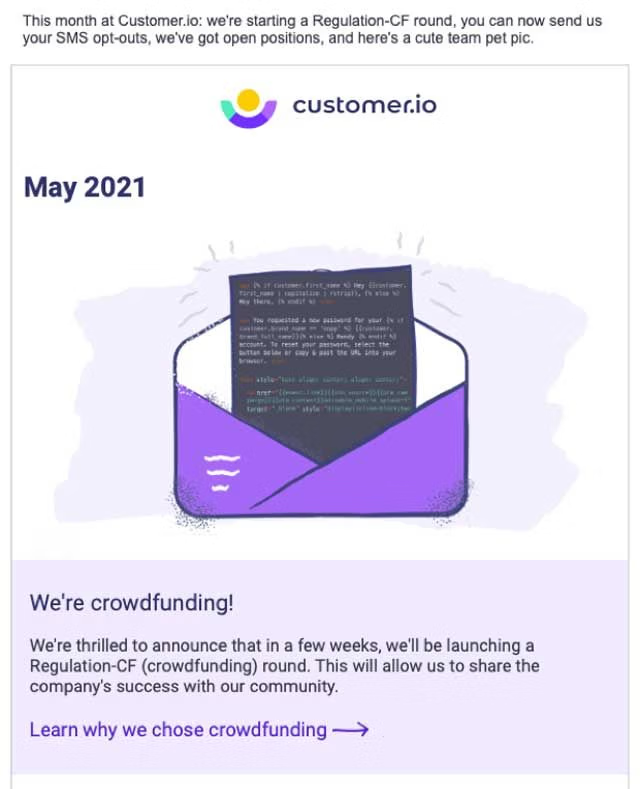 In this example, customer.io uses its newsletter to spread word about their recent crowdfunding efforts. It not only signals to readers that they are growing, but also lets customers chip in.
In this example, customer.io uses its newsletter to spread word about their recent crowdfunding efforts. It not only signals to readers that they are growing, but also lets customers chip in.Apart from company news, you can also use it for industry news. Did something big happen in your industry? Something small but interesting? Share it in a newsletter.
Newsletter Idea 3: Launch new products or updates
Your newsletter is the best channel for announcing new products or services.
It is safe to assume that people who have subscribed to your list are already interested in what you have to say. They may have purchased from you already, or are looking to purchase – which makes them the ideal audience to put your new product in front of.
For example, look at this newsletter example from Selfridges, announcing their new rental service:
 Similarly, companies also tend to launch new updates often (especially in the tech world), but there is not much point to it, if your audience does not know about it. It could be a new update that customers really needed, but only stumbled upon it months after it was released – that doesn’t sound good, does it? Enter: newsletter.
Similarly, companies also tend to launch new updates often (especially in the tech world), but there is not much point to it, if your audience does not know about it. It could be a new update that customers really needed, but only stumbled upon it months after it was released – that doesn’t sound good, does it? Enter: newsletter.
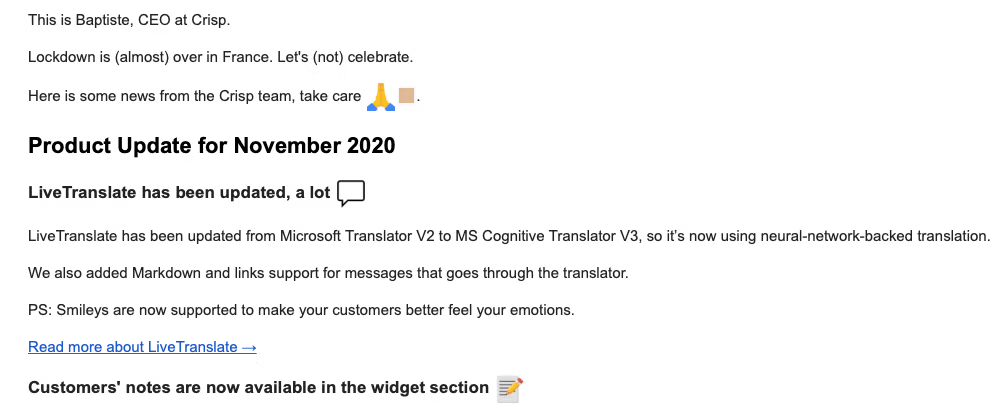 For example, this was a very useful update from Crisp at the time. Being one of their users, we were happy to know of the improvement straight away.
For example, this was a very useful update from Crisp at the time. Being one of their users, we were happy to know of the improvement straight away.Newsletter Idea 4: Educate your audience
It is always a good idea to educate your audience; how you do that will depend on what you’re offering, and where the target user is in the funnel.
A newsletter can be used for someone at the top of the funnel, or someone already at the consideration stage – to push them towards a purchase. For example, this email newsletter from Emailable, educates you about what they have to offer, and also pushes you towards a purchase.
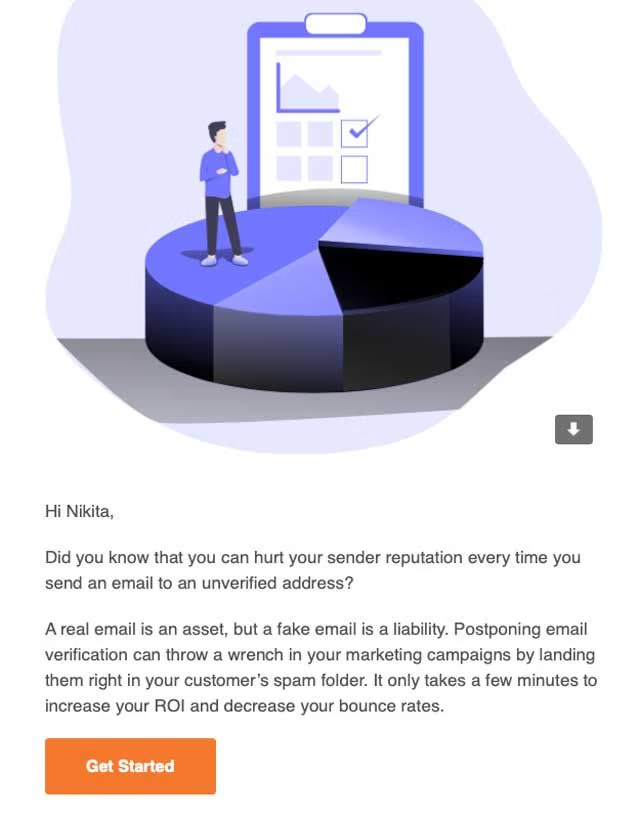 It is also a great way of keeping in touch with their audience.
It is also a great way of keeping in touch with their audience.Some products and services are lesser known, so marketers need to put an emphasis on educating their audience. Here is what Luiza Zeccer, Marketing Manager at Emailable, has to say about it:
At Emailable, we put an extra effort on educating our audience about the purpose and benefit of email verification, and use different channels such as social media and email. So far, we have seen an impressive ROI from investing in email newsletters.
Newsletter idea 5: Ask for feedback
Customer feedback is essential to guide your decision-making and should influence changes to your product or service. Feedback is also crucial for measuring customer satisfaction.
Asking your audience for feedback can also be a great way to show them that you care, and also to identify possible issues in your process. Customers will often be able to point out something that you overlooked, making it a win-win situation.
You can keep it simple by sending a straightforward email, with a call-to-action that leads them to your survey.
The best time to send a customer service newsletter is right after a customer completes an action, such as making a purchase or using a service.
Newsletter idea 6: Celebrate different occasions
You must’ve received these newsletters yourself – it sounds like an obvious idea but not many companies are taking advantage of it. This idea can be for anything from holidays to customers’ birthdays or anniversaries.
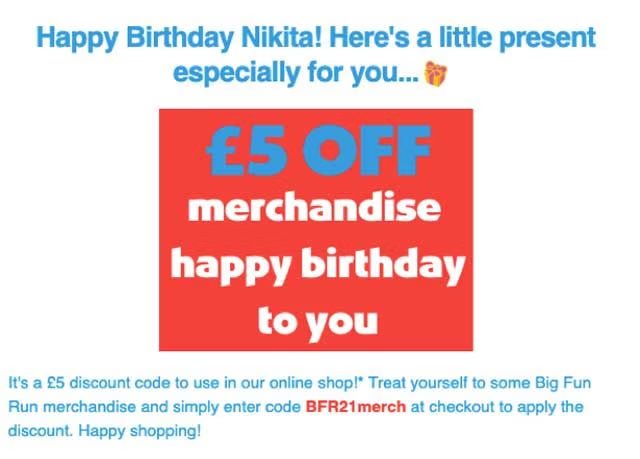 You can also choose to celebrate the anniversaries of users’ first registration on your website with special offers. Something like this can help you form better relationships with your audience.
You can also choose to celebrate the anniversaries of users’ first registration on your website with special offers. Something like this can help you form better relationships with your audience.It can also be a less obvious occasion such as the beginning of spring or summer – for some companies, such as travel companies or airlines – summer would be a great occasion to get in touch with subscribers. Look at this newsletter from EasyJet, which makes you want to go on a holiday right away.
 Newsletter idea 7: Send a video newsletter
Newsletter idea 7: Send a video newsletter
Email marketing is highly competitive, and it’s important to differentiate your email design from the competition.
Visually engaging video email marketing is more likely to resonate with your audience, especially when compared to bland, generic messages that don’t easily catch their attention.
What’s more is, you can increase your open rates just by including the word “video” in the email subject line. Yes, that is how much people like videos!
If effectively planned and managed, video email marketing can be a powerful tool for tapping the growing Internet audience.
The video itself can be a company update, testimonial, how-to, or even a funny holiday clip.
For example, Nubank sent out a very cute dog video for the birthdays of their customers.
 Before you start recording, consider where your video will go in your newsletters and the main purpose for it. If you are including an introduction video from your CEO, this should be the first information the recipients see.
Before you start recording, consider where your video will go in your newsletters and the main purpose for it. If you are including an introduction video from your CEO, this should be the first information the recipients see.The beautiful thing about videos is the fact that you can use them at all stages of the customer journey. You can use them to educate your subscribers about your products, reward them with a special promotion or giveaway, or thank them for a purchase.
Getting started on your newsletter
Now that you have looked at a few ideas and examples, we bet you can’t wait to get started on your own newsletter. But keep these in mind before you do:
- Figure out whether you need an email newsletter
- Evaluate what kind of newsletter you want to send
- Set expectations on your Subscribe page
- Think of creative subject lines
- Balance newsletter content to be 90% educational and 10% promotional
- Set one main call-to-action
- Keep design and copy minimal, and easy to follow
- Ensure that images have alt text
- Make it easy for people to unsubscribe (we wish more brands followed this)
- Do A/B testing - lots of it.
Also, it is important to keep a consistent schedule. Make sure your audience knows when they can expect to receive a newsletter from you. That way, you’ll build anticipation and you can become a part of their weekly or daily routine.
Verifying your lists
This may be the last point of this post, but it should be the first thing you do when putting into action, one (or more) of the above newsletter ideas. It is important to emphasize this because this part can be easily overlooked.
With any email campaign, you need to make sure that the quality of your list is top-notch. (For more information on why email list data goes bad, read this post).
You can ensure you only send to quality contacts by using an email checking tool, which helps you get rid of invalid and harmful email addresses, such as disposables, that can seriously damage your sender reputation. These tools are easy to use and can save you a lot of precious time and money.
Emailable is a cost-effective email verifier, which is rated number 1 according to reviews on platforms such as Capterra, and G2. It will separate the deliverable emails from the others, and you can use this information to improve your email deliverability. You can see how clear and organized the dashboard looks once the verification is complete:
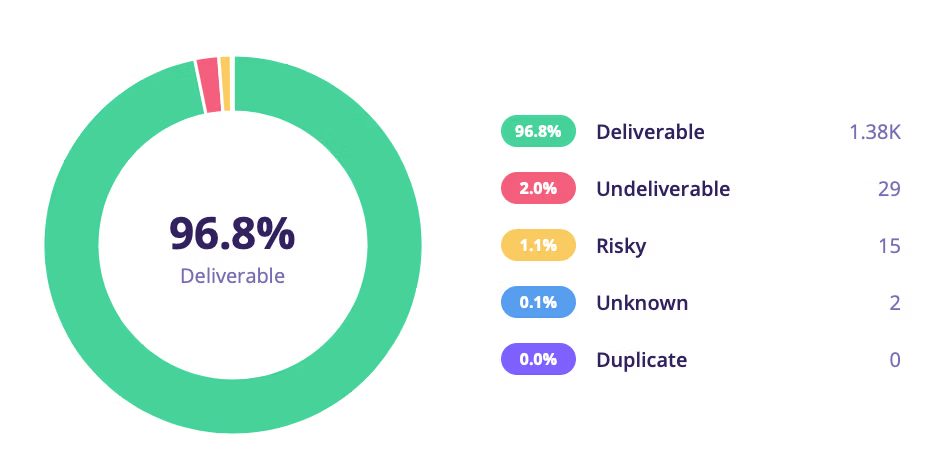 Everyone receives so many newsletters each week, which is why marketers are expected to do something special to get their audience’s attention.
Everyone receives so many newsletters each week, which is why marketers are expected to do something special to get their audience’s attention.This means you’re being faced with a challenge to create innovative content that can do wonders for your brand reputation and, ultimately, your financial results.
Finally - your newsletter ideas don’t need to be elaborate or time-intensive. Remember that people who sign up for your newsletter want to hear from you. These ideas will help you give them what they want.